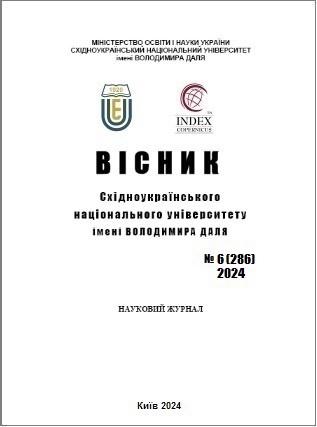Automation of a robotic marine monitoring network using an unmanned surface vessel
DOI:
https://doi.org/10.33216/1998-7927-2024-286-6-166-173Keywords:
monitoring of the marine environment, unmanned surface vessel, sonar station, control system, control algorithmAbstract
Monitoring of the surface and underwater situation is one of the important aspects of ensuring the protection of each maritime country. Currently, the most popular means of covering the underwater situation are static hydroacoustic stations and unmanned surface vessels. The main problems of their use are that hydroacoustic stations located far out to sea can be detected by intruders due to the presence of radio signals transmitted from radio buoys, and unmanned surface vessels do not provide continuous monitoring of a certain sea area. The purpose of the article is to develop a concept for building a system for automatic monitoring of the surface and underwater situation in the territorial waters of the state on the basis of an operationally deployed marine network, which is built on the basis of the use of unmanned surface vessels and stationary hydroacoustic stations with radio buoys. The structure of an operationally deployed network of passive sonar stations for detecting underwater and surface potentially dangerous objects and intruders in the territorial waters of the state is proposed. The main difficulty in operating the proposed network is the spatial location of the sonar station when installing it in a specific place on the bottom surface. To be able to control this process and maintain sonar stations, the use of an uninhabited moored underwater vehicle is envisaged. A description of the concept of the functioning of an operationally deployed network of passive sonar stations is provided, which is based on the alternate receipt by an unmanned surface vessel of information from sonar stations about the state of the underwater situation. As an integral component of the network, the vessel's communication channel with the coastal control post of the marine environment monitoring system is considered. An algorithm for the regular operation of an operationally deployed network is proposed, in which, before data exchange between an unmanned surface vessel and a passive sonar station, a procedure for initializing the sonar communication channel is provided. To increase the reliability of identification of the detected offending object, it is provided for the involvement of shore-based vessel traffic control systems.
References
1. Vasilijević А., Nađ Đ., Mandić F., Mišković N., Vukić Z. Coordinated Navigation of Surface and Underwater Marine Robotic Vehicles for Ocean Sampling and Environmental Monitoring. IEEE/ASME Transactions on Mechatronics. 2017. Vol. 22, Issue 3. P. 1174–1184. DOI: 10.1109/TMECH.2017.2684423.
2. Suciu G., Suciu V., Dobre C., Chilipirea C. Tele-Monitoring System for Water and Underwater Environments Using Cloud and Big Data Systems. 2015 20th International Conference on Control Systems and Computer Science. 2015. DOI: 10.1109/CSCS.2015.31.
3. Uncrewed Patrol Vessel. Ocean alpha. URL: https://oceanalpha.com/product-item/m75/.
4. U.S. Navy Tests Unmanned Patrol Boat for Port Security. The Maritime Executive. 2020. URL: https://www.maritime-executive.com/article/u-s-navy-tests-unmanned-patrol-boat-for-port-security.
5. Unmanned Oceanic Patrol Vessel. TECNOVERITAS. URL: https://www.tecnoveritas.net/rd-projects/uopv/.
6. Олімп-3К. Spets Techno Export. URL: https://spetstechnoexport.com/uk/product/olimp-3k.
7. SAES solutions defence & security. URL: https://electronica-submarina.com/wp-content/uploads/2018/08/Portfolio_SAES_english-1.pdf.
8. Блінцов В.С., Войтасик А.М. Підводна роботизована технологія установки корисного вантажу на морське дно. Підводні технології. Промислова та цивільна інженерія. 2016. № 04. С. 50–59.
9. Контроль за морем: якою має бути українська система висвітлення надводної та підводної обстановки. Defense Express. 2020. URL: https://defence-ua.com/news/kontrol_za_morem_abo_jakoju_maje_buti_ukrajinska_sistema_visvitlennja_nadvodnoji_ta_pidvodnoji_obstanovki-1715.html.
10. Мазур В.Ю., Боровик О.В. Концепція розбудови єдиної системи висвітлення надводної обстановки на морській (річковій) ділянці в контексті забезпечення прикордонної безпеки. Modern Information Technologies in the Sphere of Security and Defence. 2018. № 1(31). С. 137–142. DOI: 10.33099/2311-7249/2018-31-1-137-142.
11. Інформаційно захищена система моніторингу морської акваторії на базі безекіпажних підводних апаратів: метод. вказівки / Ж.Ю. Буруніна та ін.; за заг. ред. В.С. Блінцова. Миколаїв: НУК, 2018. 40 с.
12. Askerbekov D., Garza-Reyes J.A., Ghatak R.R., Joshi R., Kandasamy J., Nascimento D.L.M. Embracing drones and the Internet of drones systems in manufacturing – An exploration of obstacles. Technology in Society. 2024. Vol. 78. URL: https://www.sciencedirect.com/science/article/pii/S0160791X24001969.
13. Kumar K., Kumar S., Kaiwartya O., Kashyap P.K., Lloret J., Song H. Drone assisted Flying Ad-Hoc Networks: Mobility and Service oriented modeling using Neuro-fuzzy. Ad Hoc Networks. 2020. Vol. 106. URL: https://www.sciencedirect.com/science/article/abs/pii/S1570870520301062.
14. Zhang F., Liu H., Ma Z., Yang Y., Wan X. Study of UAV Application in Wireless Sensor Networks. 2020 3rd International Conference on Mechanical, Electronics, Computer, and Industrial Technology (MECnIT). 2020. DOI: 10.1109/MECnIT48290.2020.9166681.
15. Войтасик А.М. Розробка системи автоматичного керування багатовимірним рухом вантажного самохідного підводного носія в умовах невизначеності. Інформаційні системи, механіка та керування. 2020. № 22. С. 33–44.
16. Coventry Т. What should states do to combat the sabotage of submarine cables and pipelines beneath the high seas/EEZs? European Journal of International Law. 2024. URL: https://www.ejiltalk.org/what-should-states-do-to-combat-the-sabotage-of-submarine-cables-and-pipelines-beneath-the-high-seas-eezs/.
17. Мельник О.М., Онищенко О.А., Васалатій Н.В., Корякін К.С., Пуляєв І.О., Щенявський Г.С. Технології інформаційної взаємодії у процесі підвищення безпеки мореплавства. Вчені записки ТНУ ім. В.І. Вернадського. Серія: Технічні науки. 2022. Том 33 (72). № 4. С. 260–265.
18. Blintsov V., Babkin G. Theoretical Basis of Design and Production of Marine Robotics. Prospects and priorities of research in science and technology: collective monograph. Riga: Baltija Publishing, 2020. Vol. 1. P. 25–43.

